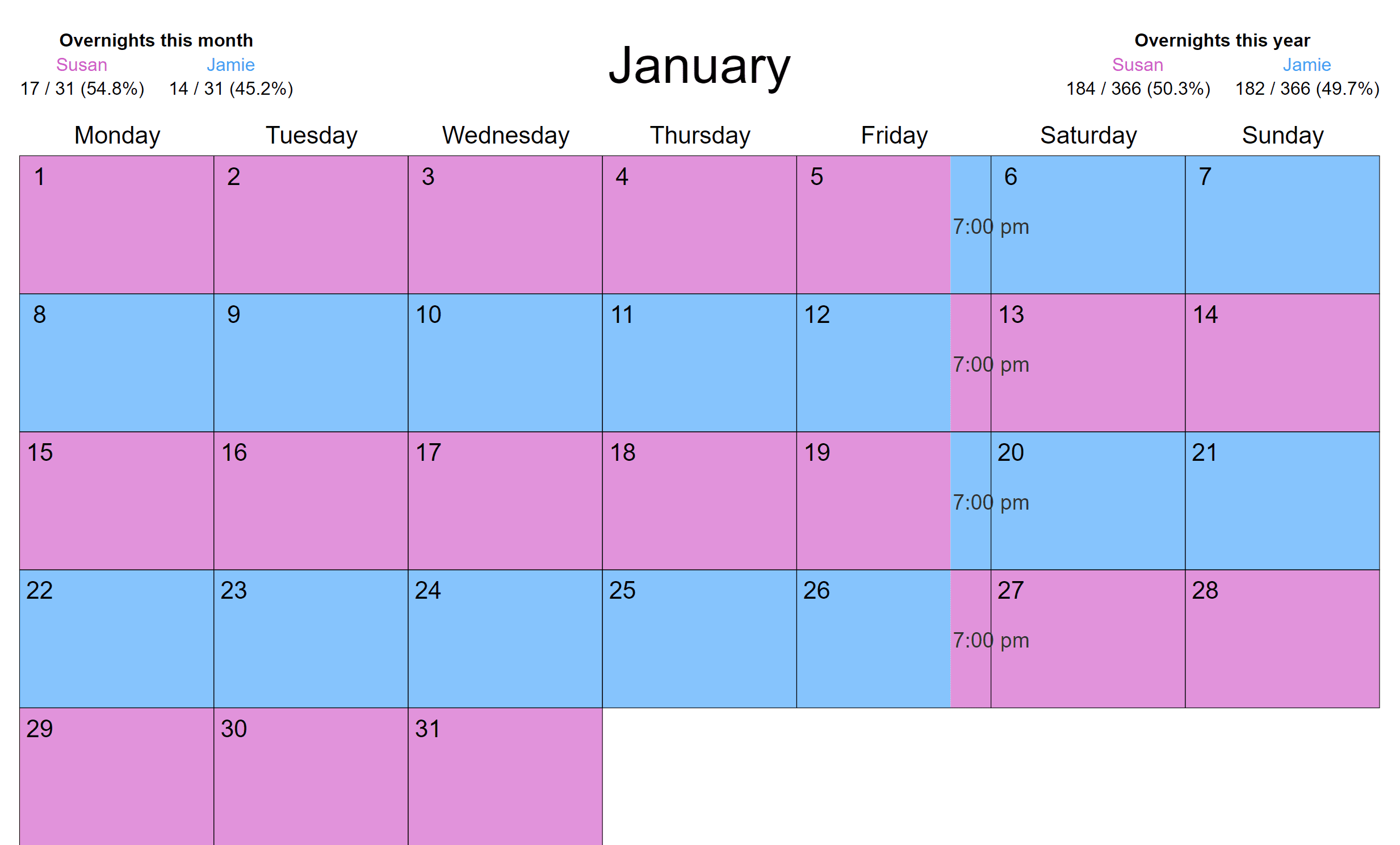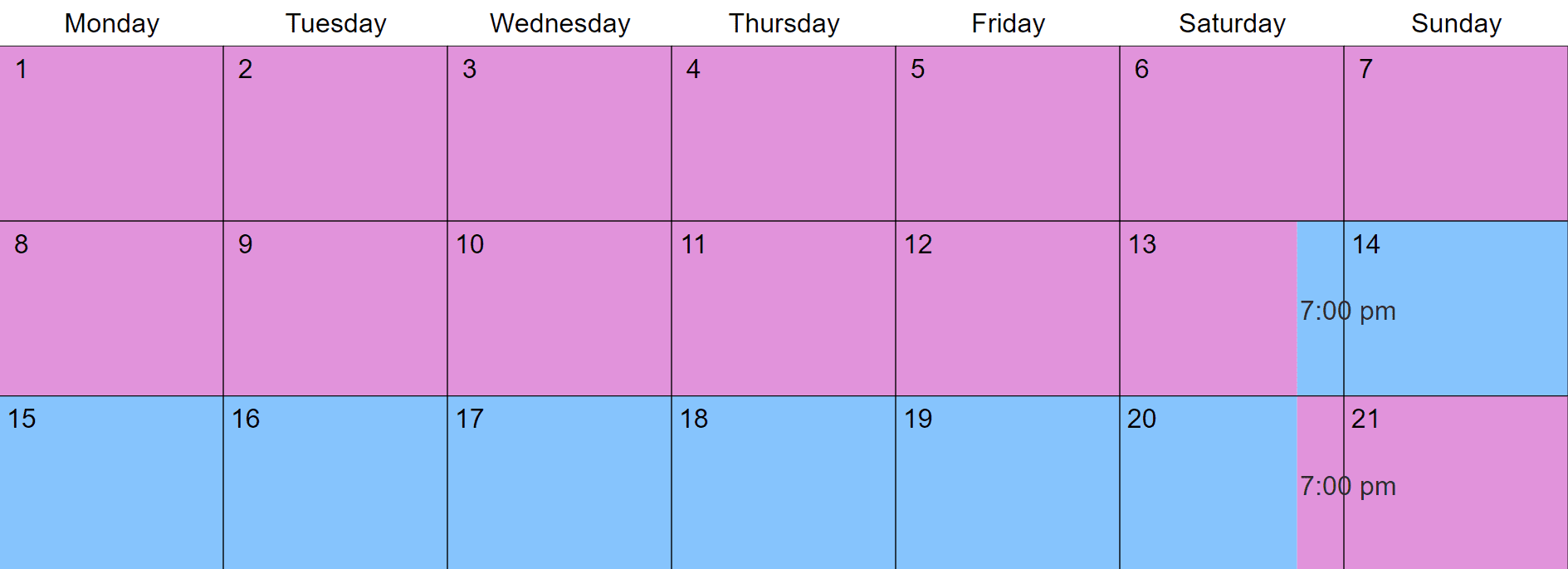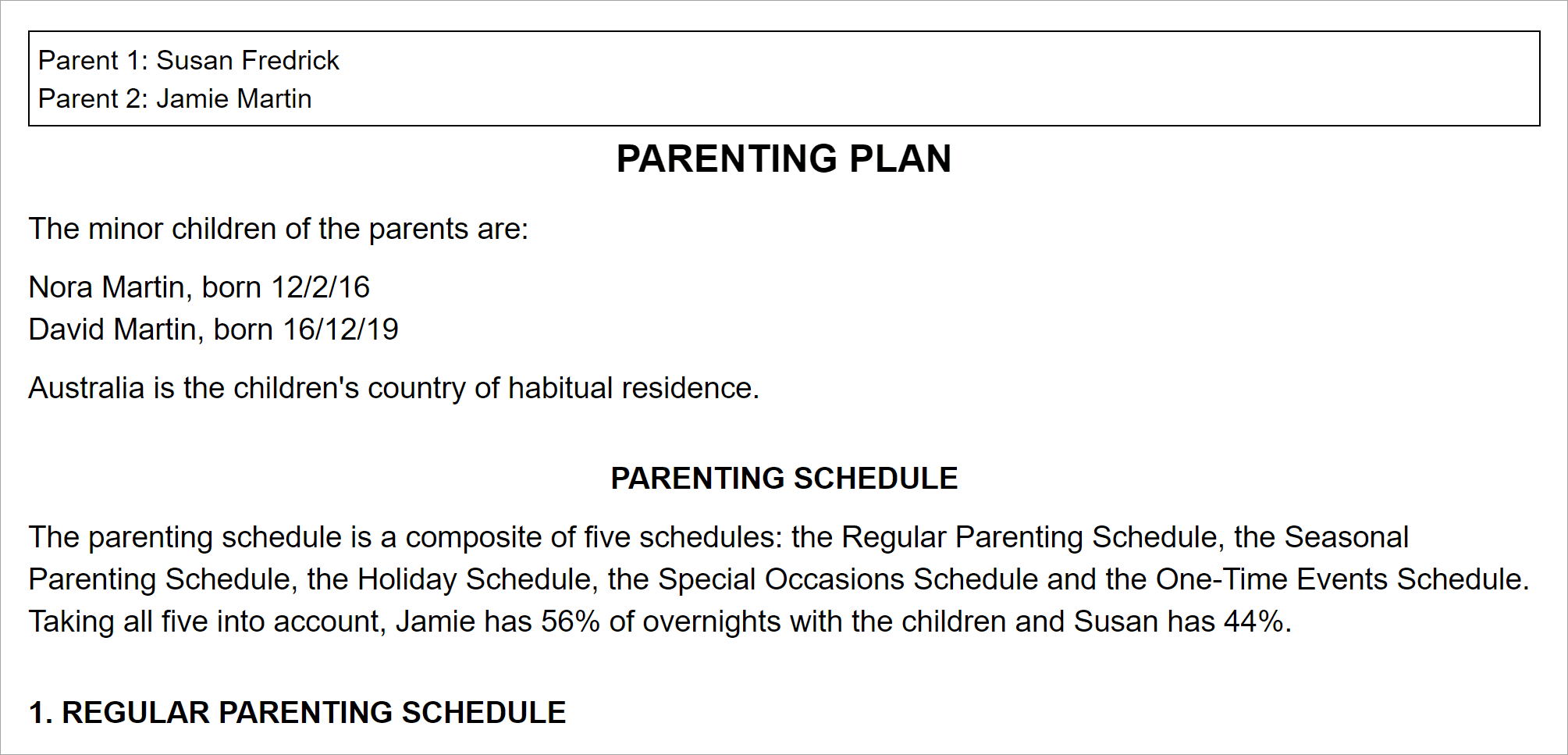Australia Parenting Schedules
A parenting schedule (informally called a custody schedule) is part of a parenting plan or parenting order. It details when a child will be with each of their parents.
In some schedules, the child lives with each parent for similar amounts of time so the parents have nearly-equal care percentages.
In other schedules, the child lives primarily with one parent. They might spend time with the other parent for hours, days or even weeks at a time. However, supervised visits (if applicable) don't last more than a few hours.
Occasionally, parenting plans and orders omit a schedule, letting parents exchange the child whenever convenient for the both of them. But including a schedule is usually a better idea. A schedule sets a default routine whilst still offering flexibility — parents are free to agree on changes.
The process of getting a schedule
Parents might agree on a schedule on their own, with lawyers or with help from a alternative dispute resolution method. No matter the approach you use, bring multiple proposals to negotiations.
Once parents agree on a schedule and the rest of their parenting plan, they can opt to make it all legally binding by lodging the information with the court as a proposed consent order.
If parents can't agree on a schedule — or on improvising changeovers together as they go — they can ask a court to determine one. Each parent then proposes schedules to the court. Use going to family court as a last resort as it can be slow, expensive and complex.
Creating a good schedule
There are many factors to consider when writing a schedule.
You should:
- Work with the other parent.
- Allow the child frequent contact with each parent.
- Consider your child's wishes if they voice any.
- Maximise continuity for your child before and after the separation.
- Choose a schedule that works for your child's age, and plan adjustments for their older years.
- Focus on what works for your family's unique situation.
- Include as much detail as possible.
- Use clear, specific wording that could apply to any year.
You can add a visual custody calendar so your schedule makes sense at a glance.

Don't be afraid to revise the schedule when both parents agree to –– e.g., after a move, a job change or a birth. If your existing schedule is set in a court order, you'll need to have your new agreement approved as a consent order.
What to include in your schedule
Your schedule should address:
- Public holidays and other special occasions
- School holidays, including summer holiday and inset days
It should state that the plan for special occasions overrides the regular parenting schedule. If you plan a different routine for school holidays, state what will happen when this time overlaps with a special occasion.
Your schedule might also show your child's time at school or daycare and regular contact with people like relatives.
Your parenting plan should address related issues, such as:
- How changeovers will work
- How a parent can cancel a parenting time period
- What happens to the schedule if a parent moves house
- When each parent may take the child on holiday
Common schedules
Your options for parenting schedules are nearly limitless. You can adapt a common schedule (like the ones below) or invent your own.
50/50 schedules
Whilst Australia does not require a child to spend equal time with each parent, many families do choose a 50/50 schedule, such as one of the following.
2-2-3 schedule: This has the child spend two days with one parent, the following two days with the other parent, then three days with the start parent. The start parent changes each week. This schedule is used mostly for young children, who need to see each parent often.

3-4-4-3 schedule: Here, the child spends three days with one parent and four days with the other. Each parent's number of days switches the following week. It's a convenient option for parents who don't want the commotion of frequent changeovers but want to see their child every week.

Alternating weeks schedule: One of the simplest 50/50 options has the child spend one week with each parent. Infrequent changeovers make this a good schedule where parents shouldn't communicate regularly or don't live near each other.

60/40, 70/30 and 80/20 schedules
Here are popular options where a child lives with one parent more than the other.
Every weekend plus a weeknight: In the every-weekend schedule, the parent who doesn't live with the child spends all weekend with them. A popular variation has the parent and child spend an additional weeknight together, making it a 60/40 schedule. This adjustment means neither parent goes more than three days without their child.

Every third week: Schedules like this are popular where one parent has a fly-in, fly-out (FIFO) work schedule. In this case, the child lives with one parent for a fortnight, then spends a week with the FIFO parent during that parent's long break from work. This is roughly a 70/30 parenting time split.

Alternating weekends: A common 80/20 arrangement, the alternating-weekends schedule has the child live primarily with one parent and stay with the other parent every other weekend.

The easiest way to make a schedule
If you're like most parents, creating a parenting schedule will feel daunting. How do you make something that will work for years to come and doesn't leave any loose ends?
The Custody X Change co-parenting app makes it easy. First, click and drag in your colour-coded calendar.


The combination of a visual and written schedule means your family will have no problem knowing who has the child when. Take advantage of Custody X Change to make your schedule as clear and thorough as can be.
